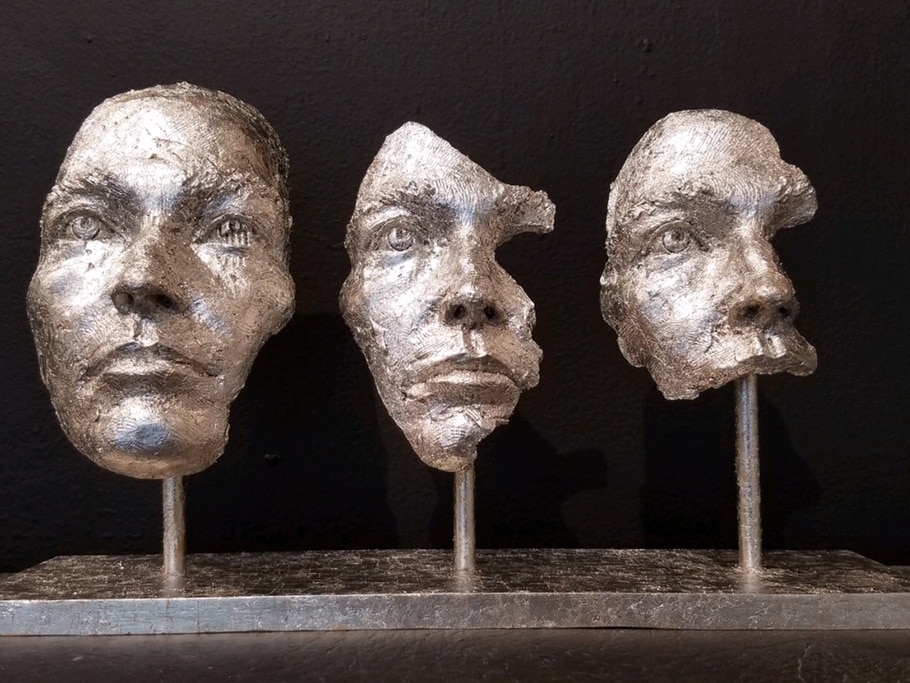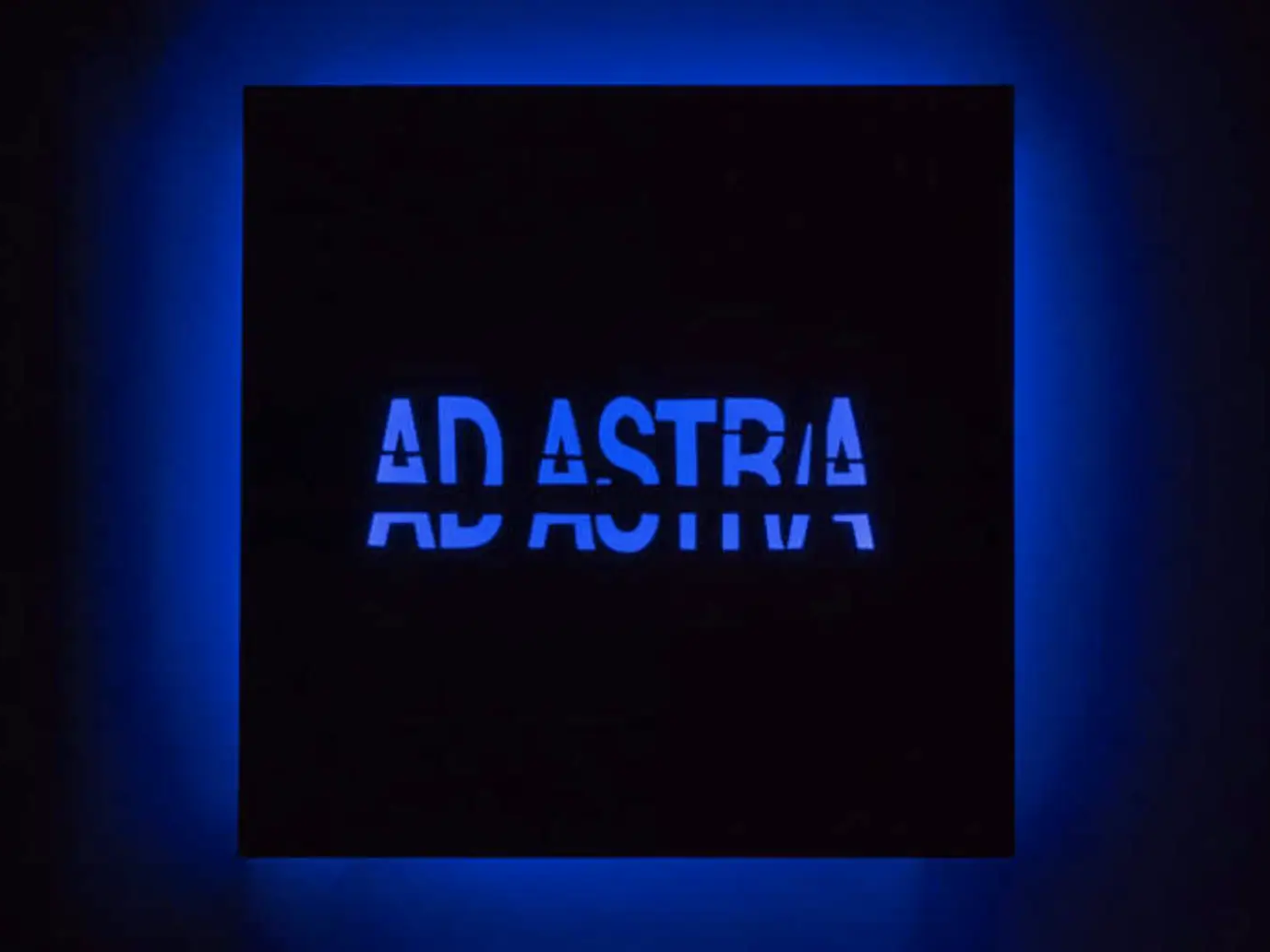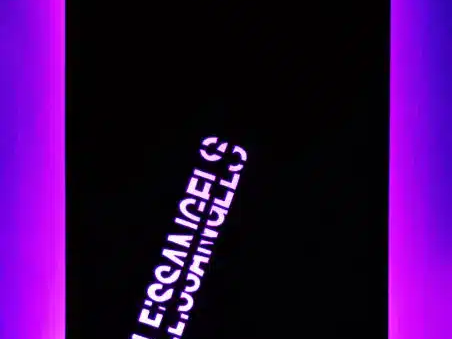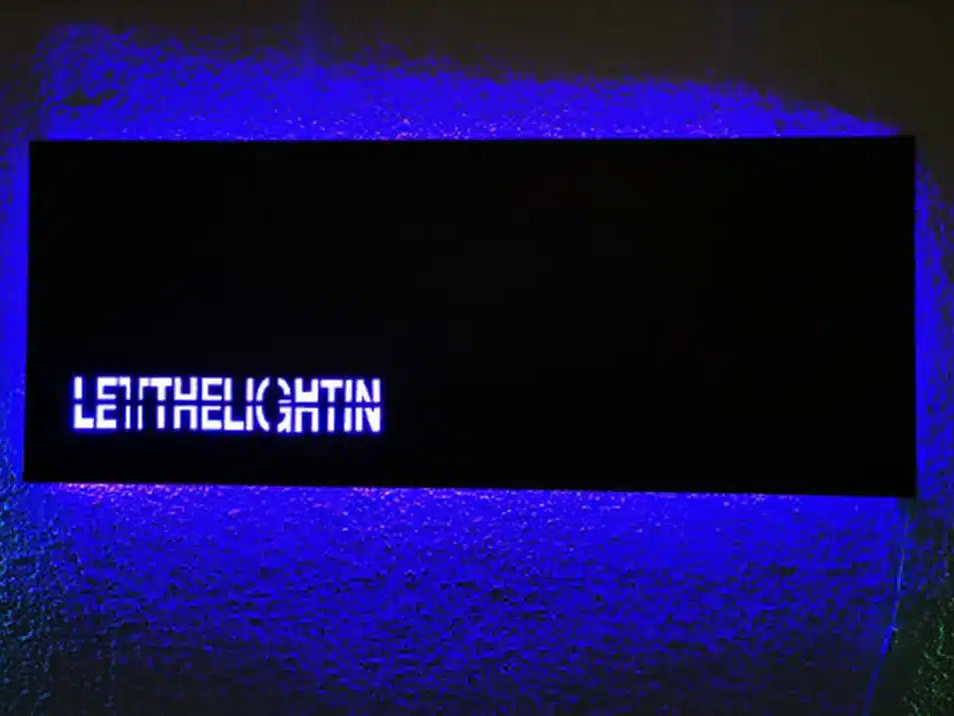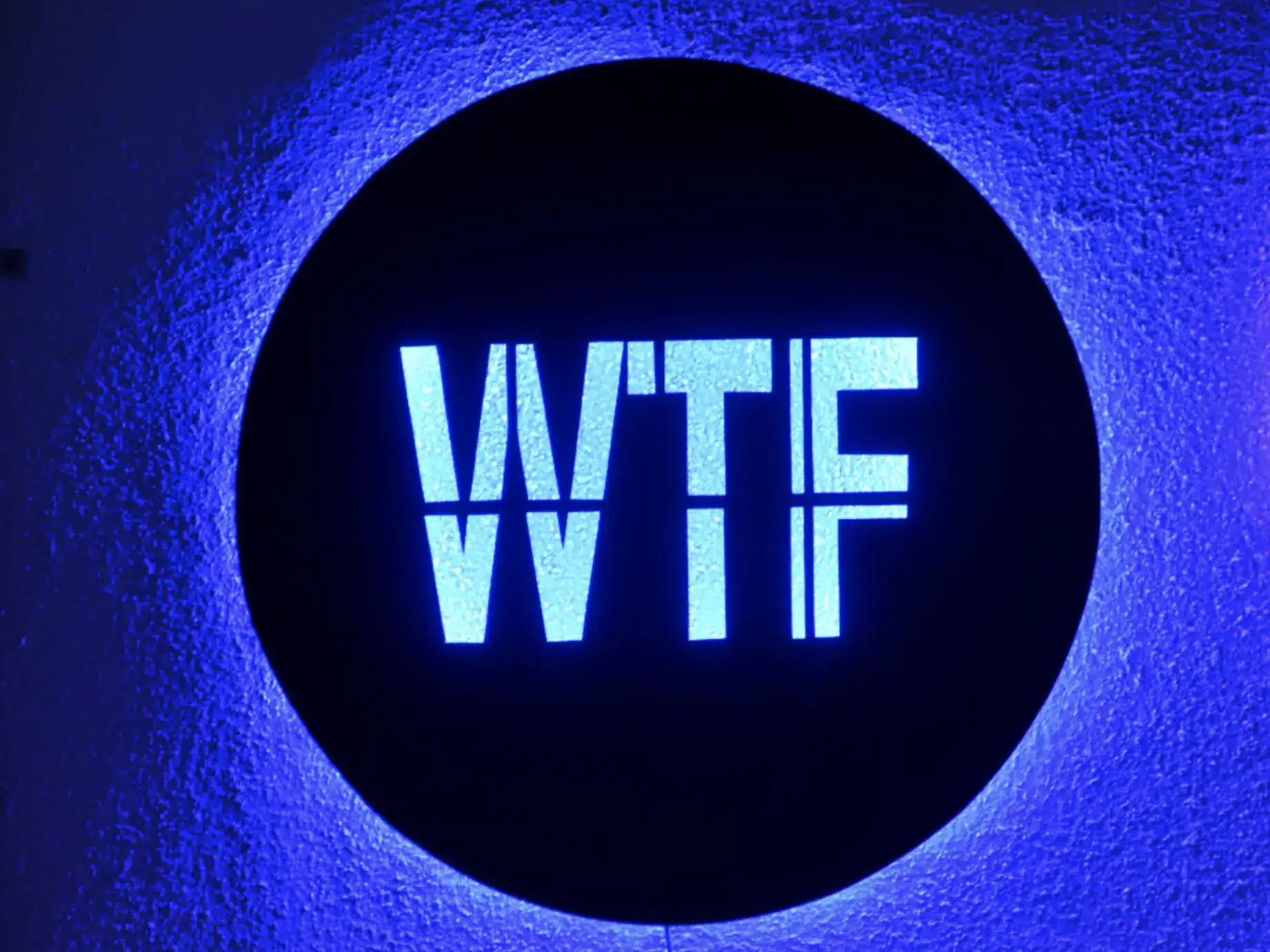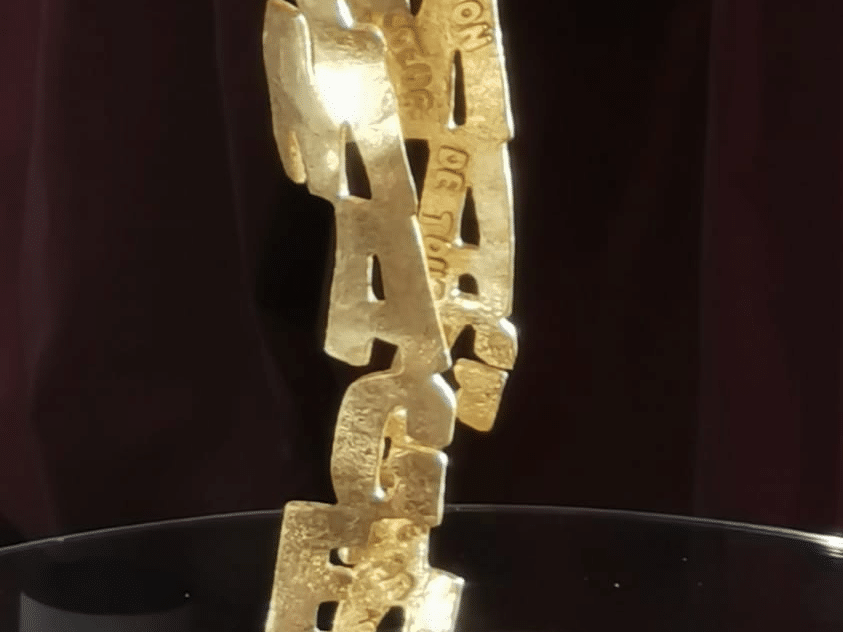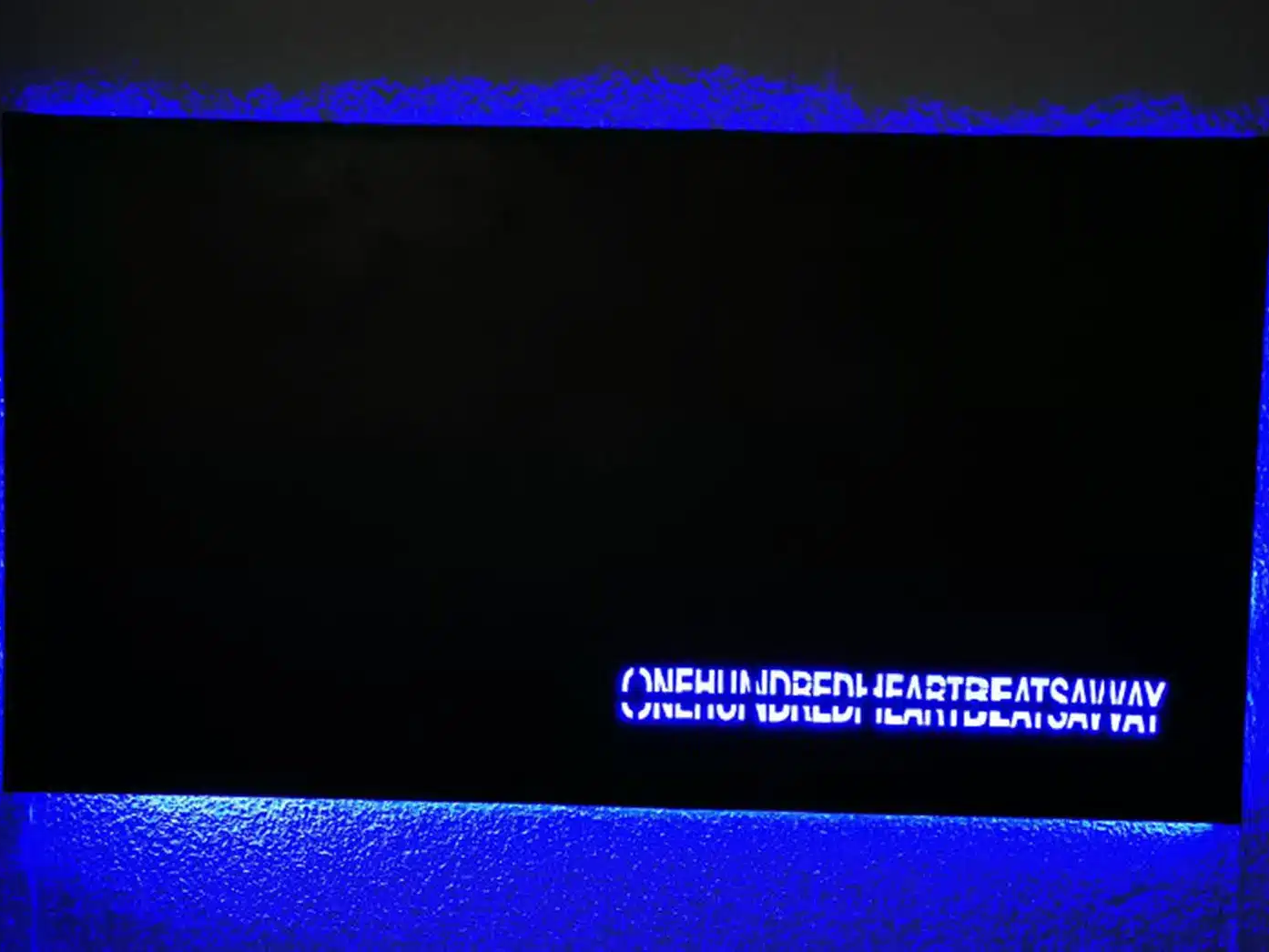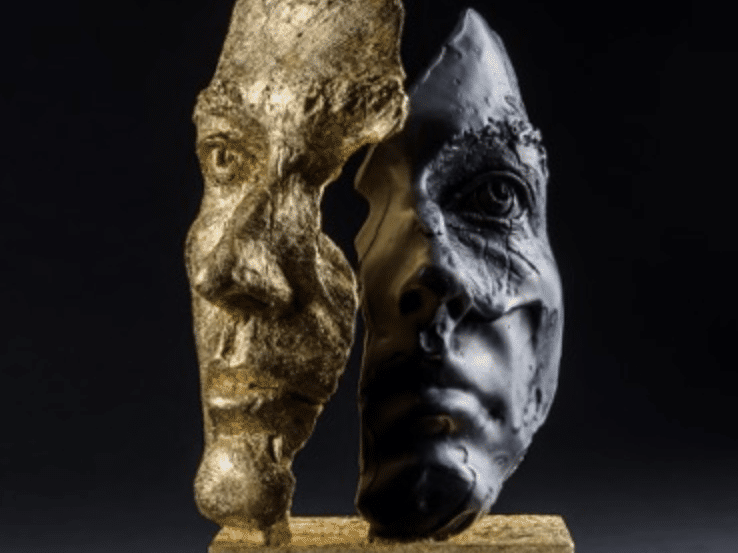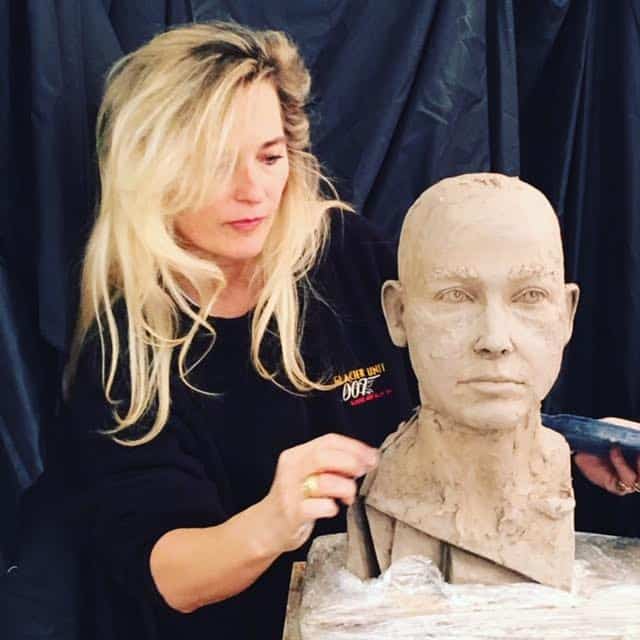Boky Hackel-Ward
“Enigmatic faces, masks, broken bronze portraits covered with gold leaf or platinum by Boky Hackel, present reinterpretations and transfigurations of her enigmatic face, sphinxes of mystery that materialize a tenacious will to affirm her attitude and artistic identity, as in Damaged for instance, in which the interior of the female figure cites an extract from the poem by Paul Géraldy, Mea Culpa: “Au Fond, vois-tu, mon erreur, ma grande folie, c’est d’avoir chargé ton cœur de tout le poids de ma vie” (taken from the book Moi et Toi), source of inspiration for the author; or in Losing myself in you.
The author in her experimental eclecticism, in search of her artistic daimon, autonomous and self-aware, finds in sculpture a code of renewal of the intangible and the spiritual, practiced assiduously from 2013 and 2016, years of fervent study and work.
Boky Hackel is a restorer, painter, musician, performer and photographer who trained in Florence where she breathed, lived and absorbed the “grammar” of the Renaissance, always passionate about poetry, fascinated by the sound of words, with these sculptures she shows a surprising artistic maturity in her ability to conjugate poetry and figuration, introducing words, letters in which she finds her autonomous and recognizable linguistic code.
At the foundry battling the wax, then the bronze, in the interpenetration of poetry and anthropomorphic, stylized figures, combining words and shapes used to give life to sculptures that become éternelles. Her male and female bodies through words welded together determine enigmatic identities. In the communicative energy of language and in the universality of poetry, the author yearns for rebirth, materialization and transfiguration of the verbum, evoking tension towards the absolute expressed with gold.
Her rigorous search for the re-novatio of classicism and the recollection of Visual Poetry (neo-avant-garde of the Sixties) materialize into bodies that invite the reflection on the difference between the male and female component. The woman is hopelessly Damaged, the man is configured with Kaboom!. As documented in bronze, Kaboom!, a unique piece, composed with the words: “Particles Collide, Ignition, Fusion and Kaboom!” that represents the clash between male and female particles, a total fusion of two disjointed entities as an expression of a carnal and creative merger that exists throughout the author’s search.
In the metaphor between the unexpressed struggle of the recognition of the Ego, you, us and other than I, a complex search configured through sculptures laden with autobiographical references, Boky emancipates herself, recognizing and freeing herself from the concepts of female and male identity, thus enhancing the psychological, cultural and social ones. She goes beyond the rationale of biological sex, finding in the creative force, the alphabet of her investigations on problems surrounding the development of identity on the distinctions between sex and gender, spirit and matter, art and poetry, verbal languages and the metaphorical ones, so typical in men and women.
Her sculpture is a will for power in action, a form that occupies a space, a structure, a universal means of communication, in which gold is the auctores, a citation of a divine component, aimed at expressing a spiritual tension, in which words become prerequisites for formal and conceptual investigations on the subject of identity. For Boky Hackel the Logos becomes figurative poetry, lyrically expressed with sculptures against gender biases and the differences between the female and the masculine components in art while exploring the origins of intuition.”
Jacqueline Ceresoli
Art Critic
IN LUCEM - INTO THE LIGHT: NEW VISUAL CODES OF BOKY HACKEL-WARD
By Jacqueline Ceresoli
For the ancient Greeks, light encompassed understanding and knowledge (from oida meaning I have seen and therefore know), while blindness was feared, although it was regarded as an ability to predict future events. For example think of Tiresias with the gift of prophetic vision, or Homer, creator of poetic stories par excellence. Tiresias, the only soothsayer who can among the dead and the living, enunciate prophecies for Odysseus deprived of external sight, receives in return internal sight, a paradoxical metaphysical vision of future events in a state of blindness.
Blindness is a form of death of knowledge of the real that nevertheless gives a new flare to mythological-metahistorical tales. Light fuels reason, while darkness originates in the regions of imagination.
Boky Hackel starts from darkness, from blackness, from rust as a symbol of moral corruption of our time with the new series of LUCEM (INTO THE LIGHT), in which she takes detachment from figuration, replacing mostly bronze sculptures centered on the representation of the body in fragments, rigorous minimalist structures of Euclidean forms in rusty steel, black and backlit with LEDs.
Hackel, like Tiresias proceeds from darkness to light, shaping the perception of ourselves and world. The sculptor committed to issues of raising awareness against violence against women or the violation of their right to freedom in previous sculptural works, with the new series of minimalist works addresses cause and effect of the Anthropocene, without representing the visible, but to reflect on the invisible by subtracting importance from the formal and stylistic qualities of the work to focus on the expression of ideas and the need to ask questions about post- humanity, through light as a promise of transformation.
Her modules, primary forms of minimalist heritage that starting with fulgent black, masterfully explored through LED light, become media designed to highlight key words that should “enlighten us ” on the consequences of the environmental emergency and humanitarian crisis of the 21st century. Hackel’s monochrome volumes materialize sections of a dark night, monochrome paintings extrapolated from the Cosmos in which forms of the imagination appear, suggested by words transformed into verbal visions inscribed in darkness that investigate the complexity of our time, where it is necessary to incubate new paradigms for living on this planet.
Man is not the only master of the Earth and should learn to live with other living species, but we forget that. Black in the linguistic usage of the Greeks and Romans is associated with feelings of enmity, danger, sadness, misfortune, and in the Old Testament, where the natural dualism of light and chaos becomes a moral-religious dualism, light is the manifestation of God and black of Satan. From darkness comes primordial chaos, evil, then death, a shadow of divine mystery while light is a universal symbol of life.
In Hackel’s works, too much light dazzles, blurs vision, makes one see in a murky way her rusty pitch-black steel; it is a non-color aimed at giving light and shedding light on processes of ecosystem degradation that we should change with our more environmentally conscious behaviors. Black is central to the palette of abstract art, think of Malevic’s black square and American Minimalism, in which standard-sized, industrially produced modules in wood or metal begin to expand in space and the materials themselves take on different meanings in relation to the environment.
Hackel from the dark/light contrast highlights how our relationships with the ‘natural’ world reflect the totality of social relationships, but we are not aware of them. In her work light and dark are convergent, one needs the other to question human societies, directing our gaze toward a ‘luminous and illuminating anthropology on the necessity of hope.
Hackel’s blackness paradoxically becomes a revelation in which light lifts the veil on the contradictions of our time, through words that mark both the end and the beginning of a new world, making thresholds of regeneration and vital impulse appear between light and dark in which the awakening from the great blindness that clouds our sight and mind takes the form of an unveiling beneath the social and humanitarian catastrophe we are experiencing, with glimmers of depth and wisdom.
Nothing found.

